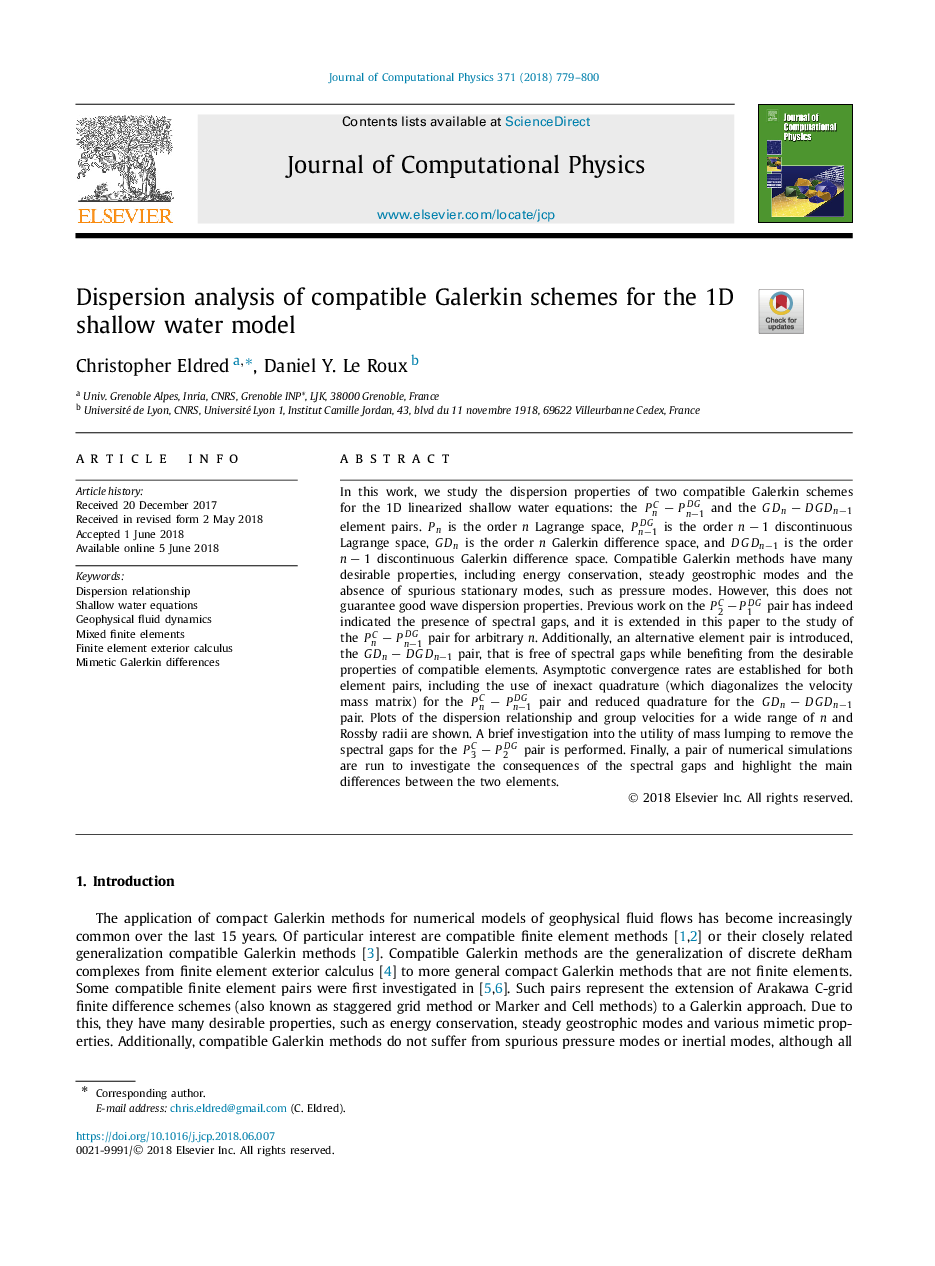| Article ID | Journal | Published Year | Pages | File Type |
|---|---|---|---|---|
| 6928695 | Journal of Computational Physics | 2018 | 22 Pages |
Abstract
In this work, we study the dispersion properties of two compatible Galerkin schemes for the 1D linearized shallow water equations: the PnCâPnâ1DG and the GDnâDGDnâ1 element pairs. Pn is the order n Lagrange space, Pnâ1DG is the order nâ1 discontinuous Lagrange space, GDn is the order n Galerkin difference space, and DGDnâ1 is the order nâ1 discontinuous Galerkin difference space. Compatible Galerkin methods have many desirable properties, including energy conservation, steady geostrophic modes and the absence of spurious stationary modes, such as pressure modes. However, this does not guarantee good wave dispersion properties. Previous work on the P2CâP1DG pair has indeed indicated the presence of spectral gaps, and it is extended in this paper to the study of the PnCâPnâ1DG pair for arbitrary n. Additionally, an alternative element pair is introduced, the GDnâDGDnâ1 pair, that is free of spectral gaps while benefiting from the desirable properties of compatible elements. Asymptotic convergence rates are established for both element pairs, including the use of inexact quadrature (which diagonalizes the velocity mass matrix) for the PnCâPnâ1DG pair and reduced quadrature for the GDnâDGDnâ1 pair. Plots of the dispersion relationship and group velocities for a wide range of n and Rossby radii are shown. A brief investigation into the utility of mass lumping to remove the spectral gaps for the P3CâP2DG pair is performed. Finally, a pair of numerical simulations are run to investigate the consequences of the spectral gaps and highlight the main differences between the two elements.
Keywords
Related Topics
Physical Sciences and Engineering
Computer Science
Computer Science Applications
Authors
Christopher Eldred, Daniel Y. Le Roux,
